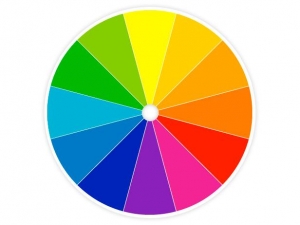Now one may ask, “Is there truly a ‘supreme color theory?’” The short answer is yes, but before on understands the truth behind the “supreme color theory,” one must understand what a color theory is.
For starters, color theory, according to my own definition, is an idea rooted in psychology to use the color of one’s attire to pursue one’s ambitions. The concept of a color theory is to use the color of what you wear to your advantage. What your advantage is can be decided by the color theorist, for each person has their own ambitions and goals and different colors work towards differing goals. However, while this interpretation of color theory is not necessarily scientifically provable as of yet, it has derived from real life experiences. One last disclaimer before the theory is presented: this theory is from my own perspective and my own life experiences this is in no way attempting to be scientific –– just an account of my personal observations. This theory also applies best to conferences where you are meeting many new people at once and need to stand out yourself. Now onto the theory.
For a multi-day conference, one to four days, I recommend the following approaches. On the first day, wear a nice blue or darker color suit or other equally formal attire. Have a bring pink or green tie, or ideally bow tie, to contract the darker colored suit. Ensure the suit/other is well tailored and fits you well. No one looks good in baggy or small clothes no matter the colors you are wearing. The darker colored main part of your attire shows you mean business and are taking the situation seriously; the brighter colored accessories show your character and personality. They will make you stand out and especially at a big conference, like Model UN or Model Senate, standing out is essential. Later on in the succeeding days, you will want to moderate the colors to be more welcoming and not necessarily stand out as the conference progresses. The middle days are for building connections and getting to know people more; if you adhered to the first method and made a good impression, you now have some options open and it is time to explore them. The finally requires a dark suit and a red tie. Bow ties are always more ideal because of their uniqueness; the red tie at the end displays to everyone that you emerged with strength and your final deals and compromises are from positions of strength. Do not fall for the trap of wearing a red tie on the first day; you will just look like Donald Trump. No matter your personal opinion of the President, make your own style ride you own path be your own person.
For single day conferences, one must adhere to the above but snipe specific styles for the type of conference. If everyone is well acquainted prior to the conference, then a bright bow tie may be unnecessary and a softer color would be more effective. On the contrary, if you are unfamiliar with many of the potential attendees, then the brighter colored accessories would be more useful; avoid the plain red tie at all costs for single day conferences. Get more creative and add more personality than just bright red. It is a power move, that will come off as too confident and cocky. Be more creative.
This color theory is more suited to formal occasions, which some clubs would see more use in this than others. Nevertheless, one can apply these colors to less formal meetings. If you are going out on a date, for example, the same color schemes would apply, maybe just not in a suit and tie but shirt and shoes. Creativity is the key; be observant of what attracts and what repels people. Personal confidence in your clothes is, however, the single most effective way to pursue your ambitions, regardless of the formality of the situation. With that, the theory is concluded and I encourage those who may agree or dissent to write or discuss in person with me your opinions on my “supreme color theory” or color theory at large.

Photo Credits: HGTV.com
